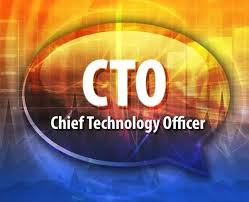
Chief Technology Officer In Chennai
The Strategic Role of a Chief Technology Officer (CTO) in Driving Technological Innovation
Introduction: In today’s technology-driven world, organizations must continuously innovate to stay ahead of the competition. The Chief Technology Officer (CTO) plays a central role in shaping the technological vision of a company and aligning it with business goals. From overseeing the development of cutting-edge technologies to ensuring IT infrastructure scalability, the CTO is a key driver of a company's growth and transformation. In this blog post, we’ll explore the essential role of a Chief Technology Officer and how they contribute to long-term business success.
What is a Chief Technology Officer (CTO)? The Chief Technology Officer (CTO) is an executive-level position responsible for overseeing the technology strategy of an organization. The CTO leads the technology and engineering teams, evaluates emerging technologies, and ensures the company’s tech infrastructure supports business objectives. They are responsible for fostering innovation, driving digital transformation, and ensuring that technology investments align with overall business goals.
Key Responsibilities of a Chief Technology Officer (CTO):
-
Technology Vision and Strategy: One of the primary roles of a CTO is to define and implement the company's technology vision. The CTO works closely with other executives to create a technology strategy that aligns with business goals, ensuring that technological initiatives contribute to the company’s growth and profitability.
-
Innovation and R&D: The CTO is responsible for identifying and adopting innovative technologies that can drive business transformation. This includes researching emerging technologies, evaluating their potential impact on the business, and driving the implementation of new solutions that keep the company competitive in the market.
-
Leadership and Team Management: As a leader, the CTO manages teams of engineers, developers, and IT professionals. They ensure that the technology team has the resources, support, and guidance to deliver high-quality solutions. Effective leadership fosters a culture of innovation, collaboration, and continuous improvement.
-
Technology Implementation and Integration: The CTO oversees the implementation of new technologies and ensures seamless integration into the company’s existing infrastructure. This includes ensuring that systems and platforms are scalable, reliable, and secure to support business operations.
-
Digital Transformation: As businesses undergo digital transformation, the CTO plays a key role in managing this transition. They evaluate existing processes, systems, and platforms, and work to implement more efficient, modern, and digital-first solutions that enhance the company's agility and competitiveness.
-
Risk Management and Cybersecurity: The CTO ensures that the organization’s technology infrastructure is secure and resilient. This includes overseeing cybersecurity measures, disaster recovery planning, and risk management strategies to protect the company’s digital assets and minimize business disruptions.
-
Stakeholder Communication: The CTO must communicate effectively with various stakeholders, including other executives, investors, customers, and vendors. They translate complex technological concepts into clear, actionable insights that guide decision-making and strategy development.
-
Budgeting and Resource Allocation: Managing the technology budget is another key responsibility. The CTO ensures that technology investments are aligned with business priorities and provides the necessary resources to support development, deployment, and ongoing operations.
Skills and Qualifications of a Chief Technology Officer (CTO):
-
Leadership and Vision: Ability to lead and inspire technical teams while developing a strategic technology vision for the company.
-
Technical Expertise: In-depth knowledge of the latest technologies, platforms, and development methodologies.
-
Business Acumen: Strong understanding of business strategy, operations, and how technology can drive business growth.
-
Innovation Management: Ability to evaluate emerging technologies and integrate them into the business to maintain a competitive edge.
-
Communication Skills: The ability to communicate complex technological ideas to non-technical stakeholders, ensuring alignment across the organization.
-
Project Management: Proven experience managing large, complex projects and teams, with a focus on delivering results on time and within budget.
-
Risk Management and Security Expertise: Knowledge of cybersecurity principles, disaster recovery planning, and risk mitigation strategies.
Why is the Role of a CTO Crucial for Sharaa Group? At Sharaa Group, we understand that technological innovation is key to staying competitive in the digital age. Our Chief Technology Officers bring deep expertise and strategic insight into every project, ensuring that the latest technologies and trends are leveraged to meet the unique needs of our clients. Whether it's digital transformation, cloud computing, or cybersecurity, our CTOs are committed to driving innovation and delivering scalable, future-proof solutions.
Conclusion: The role of a Chief Technology Officer (CTO) is vital in today’s fast-paced and tech-driven business environment. By developing a clear technology strategy, fostering innovation, and ensuring seamless technology implementation, the CTO helps organizations remain competitive, scalable, and agile. At Sharaa Group, our CTOs are at the forefront of technological innovation, helping our clients succeed in a rapidly changing digital landscape.

